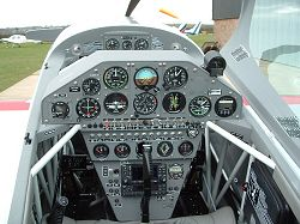Frequently asked questions
“Why would I want to learn aerobatics?”
After years of comprehensive training, most pilots in the commercial sector have realised that automated flight does nothing to enhance basic handling skills. There is good reason why courses exist in greater abundance for upset recovery training. Witness the number of incidents where fundamental piloting errors have been a factor in determining cause and effect?Private flying doesn’t have any such pressure applied. Most of the time, it’s the simple pleasure of getting airborne that counts. There is still the question of sound decision making needed, especially in unexpected situations or poor weather conditions.
The concept of knowing the range of movement available in flight and the dynamics of controlled but measured confidence while flying, remains the yardstick of good aerobatic tuition. Perhaps the true meaning of “Pilot-in-Command!”
“Isn't aerobatics just for show-offs?”
There is no mandatory requirement for aerobatics in flight training, except for the military pilot. Even then the demands of a modern day fighting force has more to do with evasive manoeuvres. So the emphasis in training techniques is different. Pure aerobatic flight is the ultimate expression of three-dimensional flight – about all that can be encompassed within pitch, roll and yaw control inputs.It is not everybody’s cup of tea, but it has always struck me as short changing the pilot under training, that elements of more than say 60 degrees of pitch or roll are not included more often.
A good aerobatic display will always be about showmanship because every pilot will develop their own style, interpretation and presentation. But good aerobatic training can help every pilot at every level to enjoy their hobby with confidence.
Is it difficult and expensive to get started?
One of the biggest factors in this question is the type of aircraft used for primary training. Most light piston types at a training school, are not built to turn upside down! You also need to be assured the Instructor knows his stuff and can impart the distilled knowledge in an inspiring fashion. Sometimes this is a hard combination to find!!Then comes the topic of differences training. It is no coincidence to discover that tail-wheel configurations offer the best strength-to-weight ratio in a flying machine. Of course, there are many tricycle examples that have basic aerobatic qualities. But usually the handling character is compromised.
One sure-fire way of learning how to use your feet properly is to accept the challenge of tail-wheel handling, both in the air and on the ground. It equips the Pilot-in-Command with a real appreciation of directional control and timing, fundamental elements of aerobatic flight as well.
What do I need to learn…?
The accepted wisdom of many highly experienced practitioners is the desire to learn the truth about yourself. The air is not a natural environment for us to master, so a measured approach is crucial. Instead of looking ahead within a limited cone of vision, probably not more than 60 degrees from the pilot eyeline, now you need to take in all the airspace in which you’re flying.This spatial awareness is the key to understanding what is happening now and where the aircraft is going next. Not as straightforward as you might think! There is greater slipstream noise, a harder working engine, high revving propeller and acceleration force, the much misunderstood “G” loading!

